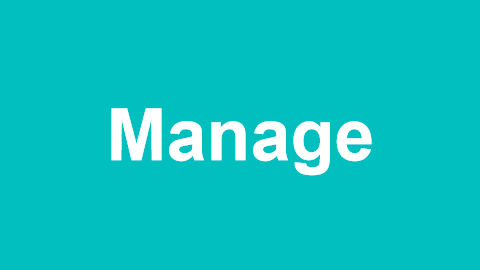Some Methods of Project Management
Have you ever taken full responsibility for a project from start to finish?
For example, organizing a conference.
This includes event planning, material preparation, and guest invitations. A while ago, I chatted with a department leader, and they said, "Usually, once we receive the task, we gather the team for a meeting and assign tasks, then keep aligning as we go."
For example, telling the team, “We have an event next week. Xiao Zhang, you handle the process; Xiao Wang, you prepare the guest list; and Xiao Liu, you manage the materials.”
However, this method can lead to problems. Even though everything seems well-prepared beforehand, some details always get missed. Like at the last conference, we forgot to prepare the host’s cue cards and the countdown sign for the guest speakers before the event started.
Sigh, why does this happen?
I realized that the problem lies in the methodology. Most mid-level managers still rely on traditional experience-based management, similar to working in a task force—holding a meeting and assigning tasks one by one.
But times have changed. In this new era, we must utilize tools and adopt a project mindset.

01. What Is Project Thinking?
Let’s first talk about what a project is.
Here’s an example:
Do you think “I want to start a business,” “I want to organize an event,” or “I want to live a good life” are projects? It might be a bit hard to define, right? Don’t worry, here’s another example.
When Jeff Bezos, the founder of Amazon, first started his business, he had the idea of selling not only books during holiday sales but also toys. Do you think that counts as a project?
These sound important, but they are not projects because they don’t have a clear delivery date, nor do we know when they will be completed. So, to turn a vague idea into a concrete “project,” the prerequisite is to turn the dream into an actionable plan.
Generally speaking, projects have three characteristics: temporary, progressive elaboration, and gradual clarity.
“Temporary” means there is a clear start and end time. We need to establish the project, ensure enough manpower and resources, set the start time for work, and assign a specific completion date.
Unique, in the sense that someone may have done something similar before, but each situation is different.
For example, if a department organizes an annual customer conference, although it happens every year, the location, scale, and organization style may vary each time. It’s unlike the company’s regular work, and everything must be restructured.
Thus, it’s not routine, repetitive work. It requires creative work and specific arrangements for each person’s role based on the specific goal of each project.
Moreover, no matter how many times you do it, you will encounter new issues during the project execution, which means projects always carry risks. Sometimes, you may realize halfway through that the task is harder than expected.
For instance:
A SaaS company delivering products to customers may seem like it follows a single set of methods and tools, but every customer and communication team is different, which means the project manager needs to invest considerable energy.
Now that we have a basic understanding of projects, what is project management?
Wikipedia says: Project management is the application of relevant skills, methods, and tools to meet or exceed stakeholders' expectations for a project. It includes planning, organizing, leading, and controlling activities.
Notice how it emphasizes "the use of relevant skills, methods, and tools." In other words, as a manager, having just methodologies is not enough for effective project management—you also need efficient management tools.
In the past, most mid-level managers focused on methodologies and experience, neglecting the importance of tools. In the future, for better efficiency and results, you need to fully utilize project management tools.
02. Two Common Misunderstandings About Project Management
Project management and department management are two different things.
Project management is different from daily operations.
What does this mean?
Department management is like classifying different types of people into folders, such as the technical department, the new media department, and the product department. This is vertical management, where each department has its own tasks and responsibilities. But project management is more like horizontal collaboration.
Here’s an example:
The new media department wants to post an article online. This involves several steps like gathering information, drafting, designing images, and formatting for review. These steps are like components that need to work together to produce a complete product.
You might say, “I used to do all this myself.”
That’s true. In smaller companies, it's common for one person to handle multiple roles. But in larger companies, especially post-Series B funding, cross-departmental collaboration is frequent.
I once worked with a client whose new media department collected information from other departments daily, compiling it into a shared document for the marketing and customer service departments to use.
This is a typical cross-departmental project. Have you experienced something similar?
It’s quite common. For example, creating a company brand manual may seem like a task for the marketing department, but it requires input from copywriters, the design team for UI, and sometimes even the product department for technical terminology.
So, we cannot handle project management in the same way as department management. Understanding this distinction offers insights: most daily tasks are operational, not project-based.
Operations are important and have their own value, but they are completely different from projects.
The single tasks you perform today were once part of a project where someone developed an entire process, transforming a vague idea into an actionable plan under uncertain circumstances. They built the framework, found solutions, and established roles, enabling what you do today.
Think about it—your stable job today exists because someone else previously managed an unstable project. Their work created the stability you now enjoy.
Therefore, repetitive tasks are the result of a mature project.
Managing projects and doing daily tasks are two different activities, shaping two different types of people. Project management and department management are also distinct concepts that require different methods. Modern managers should learn to manage "tasks," not just people.
Why Manage Tasks Instead of People?
I believe people are already managed by the company’s system. Human behavior is hard to quantify, and managing people can lead to conflict, with indirect results. However, tasks can be quantified and tracked.
Recently, a manager complained to me that he couldn’t push projects forward.
He noticed two things:
Some colleagues had a poor work attitude, often slacking off during the day by taking smoke breaks.
Whenever he asked for updates, people would blame unclear requirements or offer their interpretation of the goals, delaying progress.
He thought the programmers' frequent smoke breaks were an attitude problem. But the company handbook didn’t forbid smoking during work hours, nor did it specify limits on smoking breaks.
If he confronted the programmers about this, they might feel uncomfortable or even think he was nitpicking, which could make cooperation even harder. Although programming isn't a creative job, it still requires flexible thinking and a deep understanding of complex problems.
Once someone gets into a creative mindset, their work style may vary. Some programmers work efficiently, constantly coding, while others may be less productive during the day but work better at night.
You can’t judge a programmer’s quality solely based on appearances. Some programmers who don’t seem very diligent may excel at solving tough problems or mastering new technologies.
Programmer diversity tests the management approach of project managers—being overly strict or too lenient won’t work. People are hard to quantify, and tasks without clear standards are difficult to manage. It’s time-consuming and may not even be effective.
But managing a project is different. You don’t need to worry about what people are doing; you only need to focus on what they deliver.
Therefore, you should use work results as your management target, focusing on “tasks” rather than people. Understanding this will clarify that if someone’s work isn’t done well, it’s not their fault—it’s the project leader’s fault for not breaking down and quantifying the tasks properly.
03. How to Manage Tasks? Six Steps
1. Use Tools.
What does it mean to use tools?
As a mid-level manager (or department head), when your boss assigns a task, the first thing you should do is not to hold a meeting but to find a suitable collaboration tool.
There are many tools available, such as WeCom, Feishu’s multi-dimensional spreadsheets, Tapd, ZenTao, PingCode, and others. Some tools are better suited for large-scale projects, while others are more suitable for lightweight scenarios.
You might not believe it, but four years ago, before collaboration tools became popular, I managed small projects using Excel sheets. Nowadays, tools are much more automated—you can tag responsible parties with a single click, making them far more convenient than before.
However, some tools come with so many features that they sacrifice ease of use.
Just yesterday, a friend mentioned that a particular software had a massive user manual and templates, making it feel overwhelming to learn. There's an important principle here: “Do not complicate things.” I choose tools based on a specific goal. If the tool isn’t intuitive, I’d rather not use it.
This reminds me of a joke from the software industry: "Five engineers can finish a task in a year, but 10 engineers will take two years.” This aligns with Kevin Kelly's view: "All possessions require maintenance, and eventually, the things you own will own you." So, be cautious when choosing tools.
It’s best to be prepared with tools before stepping into the battlefield. Don’t rely on the company to provide software systems for you from the top down. Often, your boss doesn’t understand the execution process or know which tool is best for your department.
2.Gathering Requirements
In the beginning, without any specific tools, you can use a simple TODO list to record requirements. For example, if it's for a conference, leadership might mention when they plan to hold it, who they want to invite, and how much budget is allocated.
Requirements gathering is the starting point of project management. Don’t rush to assign tasks; instead, lead your team in deep discussions about the tasks. This will help accurately uncover all related requirements.
During this process, we may use surveys, conduct one-on-one interviews, or even communicate with leadership again to confirm the details.
It’s worth mentioning that requirements gathering is not a one-time task. After completing today’s tasks, based on the outputs, you can pull everyone together for a meeting tomorrow to further refine more details.
3.Breaking Down Tasks
How do we break them down?
Work Breakdown Structure (WBS) is a method of breaking a project into smaller, more manageable parts. After collecting requirements, several major tasks will emerge, which need to be further broken down into smaller tasks.
This method of breaking things down is like a tree branching out. I create a checklist in Excel to manage the smaller tasks, categorizing them by type.
Remember, when creating a WBS, break down the main tasks into sub-tasks, and then further divide the sub-tasks until each task is small enough to be assigned, executed, and monitored individually. This is important.
04. Task Timing
Next, tasks should be associated with “work time efficiency.”
Work time efficiency refers to how long it should take to complete a task based on its nature, not how fast the person doing it works.
For example:
The marketing team needs to design an image for an ad campaign. After analyzing the task's size and complexity, we estimate that the standard time to complete the image is two hours. This is what we call work time efficiency.
Work time efficiency is determined by the task's complexity and difficulty, including design elements, brand requirements, and technical details. It can be as precise as half a person-day, one person-day, etc.
Many project managers assign tasks based on each person’s work speed, which causes problems. They ask designers, “Can you finish this picture in a day or half a day?” Doing so often leads people to intentionally delay their work, and projects end up rushed at the last minute, leaving no time for review.
Another critical point: when assigning tasks, be sure to specify who will complete the task. If you assign a task to two or more people, they may end up pushing the responsibility onto each other, and no one solves the problem.
For every task you assign, make sure to clarify the task's objectives with the person doing it. Specify the goal and how long it should take. Then, based on the agreed objectives, regularly check on the progress.
If, as a project leader, you don’t confirm the objectives for each task, the project progress may become unclear because you won’t know how far it will have progressed in a day, and you might struggle when it comes time for review.
05. Deliverables
When assigning tasks, think in terms of “deliverables.”
What are deliverables?
Simply put, they are the tangible results you need to submit once the task is completed. This could be a document, a report, a design drawing, or a product prototype—depending on what the task is.
For example, in research:
Deliverables might include a questionnaire, information about research subjects, recorded interview content, and finally, recommendations and analysis conclusions. These not only serve as evidence of task completion but also provide the team with genuinely useful feedback.
In my experience, the more granular the details, the more efficiency improves—by 2 to 3 times.
So, simply put: clearly define tasks, assess how much time each task will take, assign responsible persons, and set specific deliverables. You can use the 5W2H method to help assess everything.
Of course, as a project manager, you’re not only responsible for task management but also for overseeing the entire project’s progress. This brings us to the sixth point: Managing the Master Sheet.
06. The Master Sheet
The master sheet is essentially a large table. It includes many details, such as table formatting, task dependencies, formatting, responsibility assignments, project team contact information, etc.
The core purpose is to allow everyone to see at a glance what stage the project is at and what tasks are still left. This way, better collaboration is possible, and the project can be pushed forward more efficiently. If you’re unsure how to create one, download a few templates online and learn about the general structure.
Conclusion
Project management isn’t complicated.
I recommend developing project thinking, not just being a manager. Strictly speaking, a manager is not necessarily the best project leader; however, an excellent project leader will certainly become an outstanding manager.







